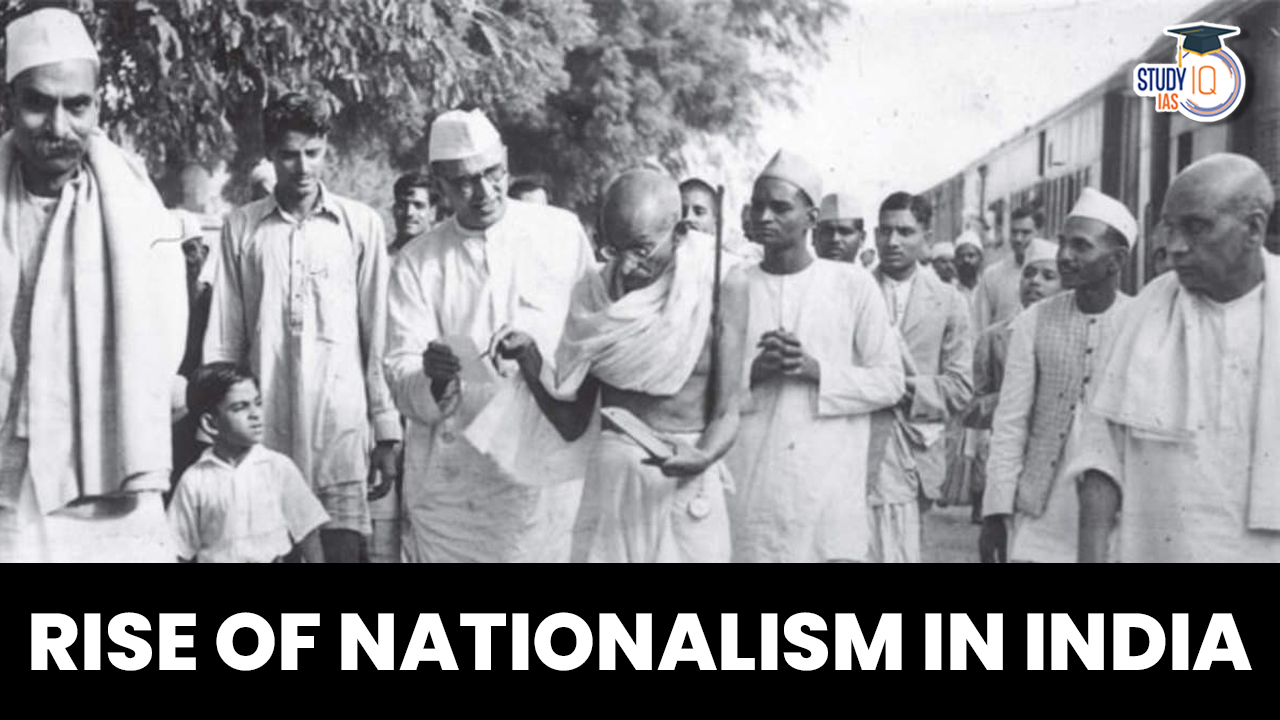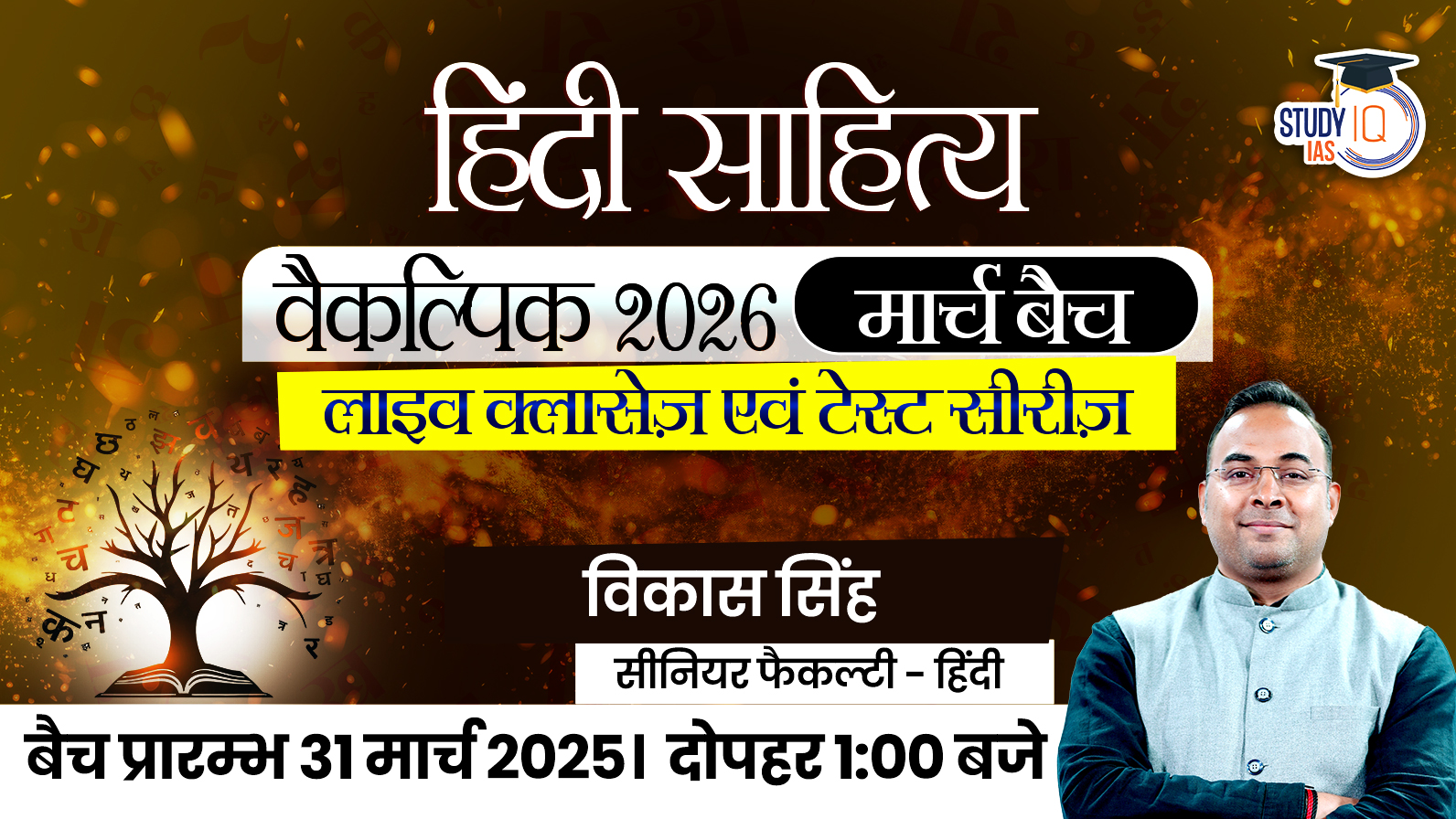Table of Contents
Rise of Indian Nationalism in India: The rise of nationalism in India is connected with the anti-colonial movement in India. The different groups of people in India shared a sense of bond with each other due to the oppression faced by all of them under colonialism. This article will share interesting insights on the various events which gave rise to nationalism in India.
Rise of Nationalism in India: What is Nationalism?
Nationalism is a complex and multidimensional idea that has influenced politics and human history for a long time. It can be characterized as a strong sense of allegiance and dedication to one’s country or nation, which is frequently exemplified by a shared culture, language, religion, and history. The desire for independence, sovereignty, and self-determination is frequently linked to nationalism.
Nationalism can take many different forms, from the preservation of culture and languages to political and economic independence. It can either be a unifying force that brings people together around common values and aims or a dividing factor that pits various groups against one another in the name of advancing their own interests. A sense of identification and belonging is one of the main forces behind nationalism.
People frequently feel a sense of pride and loyalty for and identification with their country or nation. Numerous elements, including as history, language, culture, religion, and political institutions, influence its identity. Nationalism can inspire people to work towards shared beliefs and goals, which can be a constructive force for change. For instance, it was crucial to the struggle for independence in numerous nations, including as South Africa, India, and the United States.
The fact that it motivates people to make investments in their communities and work towards shared prosperity makes it potentially a potent tool for social and economic development. Nationalism may, however, also be a destructive force that sparks conflict and violence. The interests of one’s own group are frequently put ahead of those of others in nationalist movements, which can result in prejudice and even violence towards minority groups.
This is obvious in the rise of xenophobia and anti-immigrant sentiment in Europe as a result of ethnic nationalism. The development of imperialistic powers in the 19th and 20th centuries is one example of how nationalism can be used to legitimize violent and expansionist actions. The clashing of opposing nationalist interests has frequently resulted in war and strife. The emergence of nationalist groups has also been linked to a reduction in internationalism and international cooperation.
The recent growth of populism and anti-globalization movements in numerous regions of the world is evidence of this. These groups reject the notion of international cooperation and governance in favour of a constrained and exclusive conception of national identity.
Rise of Indian Nationalism in India
Indian Nationalism’s Rise in India, 1885–1905: British rule over India has been in place for a very long period. They subjected Indians to various forms of torture and also stole their possessions and riches for their own purposes. Despite their poor living conditions, the Indians were not tolerant and frequently battled for their freedom. Before 1885, every battle or uprising they organised ended in failure, if not in totality. By 1900, Indians’ feeling of nationalism was thriving, and they banded together to defend their rights. Bal Gangadhar Tilak and Surendra Nath Banarjee are regarded as the founders of nationalism.
Only in the latter half of the 19th century did India’s national consciousness begin to grow. Before it, there had been conflicts and battles against British colonialism, but they were all confined to local regions and, in any event, did not cover the all of India. In fact, some academics at the time did not even believe India to be a country. Political union had existed in the past, but it was not a lasting phenomenon. Nevertheless, despite being ruled by numerous kings, there was always a sense of cultural unity, and foreign countries always referred to the subcontinent as India or Hind as being one entity.
Rise of Nationalism in India: Historical Background
The founding of the Indian National Congress (INC) in the late 19th century marks the beginning of nationalism in India. A.O. Hume, a retired British civil servant, and a group of Indian leaders established the INC in 1885. Its principal objectives were to advance Indian interests throughout the British Empire and secure India’s independence. Early on, the INC was a moderate group that prioritised constitutional changes and slow political progress.
When the Indian National Congress (INC) was founded in the late 19th century, nationalism in India began to take root. The INC was established in 1885 by a group of Indian leaders and A.O. Hume, a retired British civil worker. The promotion of Indian interests inside the British Empire and the achievement of Indian self-rule were its principal objectives. The INC was once a moderate group that concentrated on constitutional changes and slow political development.
Nationalist feeling was further exacerbated by the 1919 Amritsar massacre (also known as the Jallianwala Bagh Massacre), in which British troops shot at a group of nonviolent protesters. The event was a watershed moment in Indian history and the start of the end of British control in India.
Rise of Nationalism in India: Under Moderates and Radicals
The Indian National Congress (INC) adopted a moderate stance during its first 20 years. They began by requesting that Indians have more clout in the executive and legislative branches of government. By the 1890s, the political stance of the Congress had dissatisfied Lala Lajpat Rai in Punjab, Bipin Chandra Pal in Bengal, and Bal Gangadhar Tilak in Maharashtra. Radicals favoured people defending their swaraj using their own resources rather than the goodwill of the British government.
Causes of the rise of the National Movement in India
Western education: The primary reason Macaulay established a western educational system in India was to produce a class of educated Indians who could assist their colonial overlords in the management of the “natives.” This strategy kind of backfired since it gave rise to a group of Indians who were exposed to the liberal and radical ideas of European authors who promoted liberty, equality, democracy, and reason. Indians from various places and religions were also brought together by the English language.
Vernacular languages: Vernacular languages saw a comeback in the 19th century as well. This aided in spreading among the general public the notions of liberty and rational thought.
End of the old social order: The previous socioeconomic structure of the nation came to an end under British imperialism. This angered a lot of Indians.
Socio-religious reform movements: The 19th-century socio-religious reform movements made a significant contribution to India’s rise of nationalism. These movements aimed to dispel the then-dominant superstition and social ills while also spreading the message of peace, reason, and patriotism among the populace. Raja Ram Mohan Roy, Ishwar Chandra Vidyasagar, Jyotiba Phule, and others were notable reformers.
Economic policies of the British: Indians, particularly farmers, experienced significant poverty and debt as a result of the British empire’s repressive economic policies. Famines that killed thousands of people frequently occurred. This fostered the roots of a desire for freedom from foreign domination and produced a painful sense of suppression as a result.
Political unity: Most of India was united under a unified political system during the British rule. All regions adopted a single, integrated administrative structure. Due to this aspect, Indians began to experience a sense of “oneness” and nationalism.
Communications network: In the nation, the British constructed a network of roads, trains, post offices, and telegraph lines. As a result, there were more people moving about the country and more information was being exchanged. All of this has hastened India’s national movement’s growth.
Growth of the modern press: The Indian press expanded during this time, both in English and in the country’s indigenous tongues. This was a significant element that contributed to the spread of information.
Lord Lytton’s policies: From 1876 to 1880, Lord Lytton served as the Viceroy of India. South India experienced a famine in 1876 that resulted in the deaths of about 10 million people. His trading practises came under fire for escalating the famine. Additionally, he organised the great Delhi Durbar in 1877, spending a considerable sum of money at a time when many people were starving to death.
The Vernacular Press Act of 1878, which Lytton also approved, gave the government the right to seize publications that published “seditious material.” He also enacted the Arms Act of 1878, which made it illegal for Indians to possess any form of weapon without a permit. Englishmen were excluded under the law.
Legacy of the Revolt of 1857: There was intense racial hostility between the British and Indians following the Revolt of 1857 and the British’s harsh suppression of it.
Ilbert Bill controversy: In 1883, the then Viceroy Lord Ripon and Sir Courtenay Ilbert, the legal adviser to the Council of India, proposed the Ilbert Bill, which gave Indian judges the authority to hear complaints against Europeans. However, there was a significant backlash against this measure from British citizens in Britain and India. The arguments raised in opposition to this law revealed the English’s pervasive racial prejudice against Indians. Additionally, this made educated Indians aware of the true nature of British colonialism.
National movements outside the country: The French Revolution, the American War of Independence, and other international national movements were among the many that influenced Indian nationalists.
Impact of Rise of Nationalism in India
India was significantly impacted by the emergence of nationalism in that nation. In 1947, an independent Indian state was created as a result, ending British authority in India. Given that many of the important players in Indian politics were also nationalist leaders, the nationalist movement also had a significant impact on how the political landscape of the nation was shaped.
Indian society was significantly impacted by the nationalism movement. It was crucial in advancing social transformation and spreading knowledge about topics like caste prejudice and gender inequity. Many of the most prominent nationalist leaders were also social reformers who fought for the rights of underrepresented groups of people.
In contemporary India, the nationalist movement’s legacy is still evident. The democratic and secularist ideals, which were supported by the nationalist movement, are the cornerstones of the nation’s political structure. Many of the recent social and economic improvements that have occurred in the nation were also made possible by the movement.
Rise of Nationalism in India: Overall Process
India’s rise to nationalism has been a complicated and intricate one. India has been the centre of a wide variety of nationalist groups, each with its own distinct set of objectives and ideas, from the early 20th century to the present.
While the Indian nationalist movement was crucial in winning independence from British control and influencing the nation’s politics and history, it has also had its fair share of difficulties and controversies. Hindu nationalism and cultural nationalism have been more popular in recent years, which have exacerbated polarisation and tensions amongst various ethnicities.
In the end, how the nation’s leaders and population choose to deal with these issues will determine the course of nationalism in India. We must all fight to create a society that is more diverse, tolerant, and democratic while also recognising the depth and complexity of Indian culture.
| Other Articles related to Independence Day | |
| Revolt of 1857 | Women Freedom Fighters of India |
| Indian freedom struggle | Independence day speech |
| Freedom Fighters of India | Indian National Movement |


 CDS Syllabus 2025, Download Subject Wise...
CDS Syllabus 2025, Download Subject Wise...
 Rana Sanga: The Fearless Rajput King and...
Rana Sanga: The Fearless Rajput King and...
 Vikramshila University Revival, Location...
Vikramshila University Revival, Location...





















